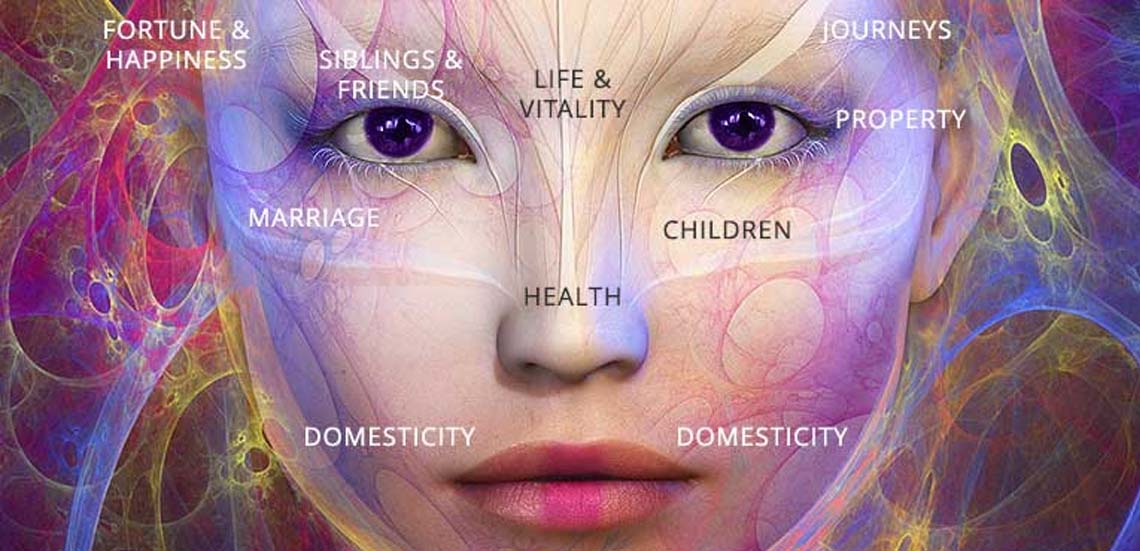Face Reading
Face reading, also known as physiognomy or facial diagnosis, is an ancient practice that involves analyzing a person's facial features to gain insights into their personality, character, and even their physical and emotional health. Here's a comprehensive guide to face reading:
- Facial structure: The overall shape and proportions of the face reveal information about a person's personality, temperament, and emotional tendencies.
- Facial features:Individual features such as the eyes, nose, mouth, and jawline provide clues about a person's character, strengths, and weaknesses.
- Facial expressions:A person's facial expressions can reveal their emotions, attitudes, and intentions.
- Eyes:
- Shape:Almond-shaped eyes indicate creativity and intuition, while round eyes suggest a more practical and detail-oriented approach.
- Size: Large eyes can indicate a strong desire for knowledge and understanding, while small eyes may suggest a more reserved or introspective nature.
- Color:Blue eyes are often associated with trustworthiness and loyalty, while brown eyes suggest a more practical and down-to-earth approach.
- Nose:
- Shape:A straight nose indicates a direct and straightforward approach, while a curved nose suggests a more creative and adaptable nature.
- Size:A large nose can indicate a strong sense of ambition and confidence, while a small nose may suggest a more modest or humble approach.
- Mouth:
- Shape:A full mouth with prominent lips indicates a strong desire for pleasure and enjoyment, while a thin-lipped mouth suggests a more restrained or disciplined approach.
- Size:A large mouth can indicate a strong sense of confidence and self-expression, while a small mouth may suggest a more introverted or reserved nature.
- Jawline:
- Shape:A strong, angular jawline indicates a determined and ambitious nature, while a softer, more rounded jawline suggests a more gentle and compassionate approach.
- Size: A prominent jawline can indicate a strong sense of confidence and authority, while a receding jawline may suggest a more submissive or passive approach.
- Oval face: Indicates a balanced and harmonious personality, with a strong sense of adaptability and diplomacy.
- Round face: Suggests a more emotional and sensitive nature, with a strong desire for comfort and security.
- Square face: Indicates a strong and determined personality, with a sense of confidence and authority.
- Triangular face:Suggests a more analytical and logical approach, with a strong desire for knowledge and understanding.
- Heart-shaped face: Indicates a more emotional and empathetic nature, with a strong desire for connection and relationships.
- Skin tone:A healthy, radiant complexion can indicate overall physical and emotional well-being./li>
- Eye bags: Dark circles or puffiness under the eyes can suggest fatigue, stress, or poor sleep quality.
- Nose color:A red or inflamed nose can indicate allergies, sinus issues, or high blood pressure.
- Mouth lines:Deep lines or creases around the mouth can suggest stress, anxiety, or digestive issues.
- Subjectivity: Face reading is a subjective practice that relies on interpretation and intuition..
- Cultural bias:Facial features and expressions can be culturally specific, and face reading may not be universally applicable.
- BLack of scientific evidence: There is limited scientific research supporting the claims made by face reading practitioners.
Face reading is a complex and multifaceted practice that can provide insights into a person's personality, character, and health. However, it is essential to approach face reading with a critical and nuanced perspective, recognizing its limitations and potential biases.
